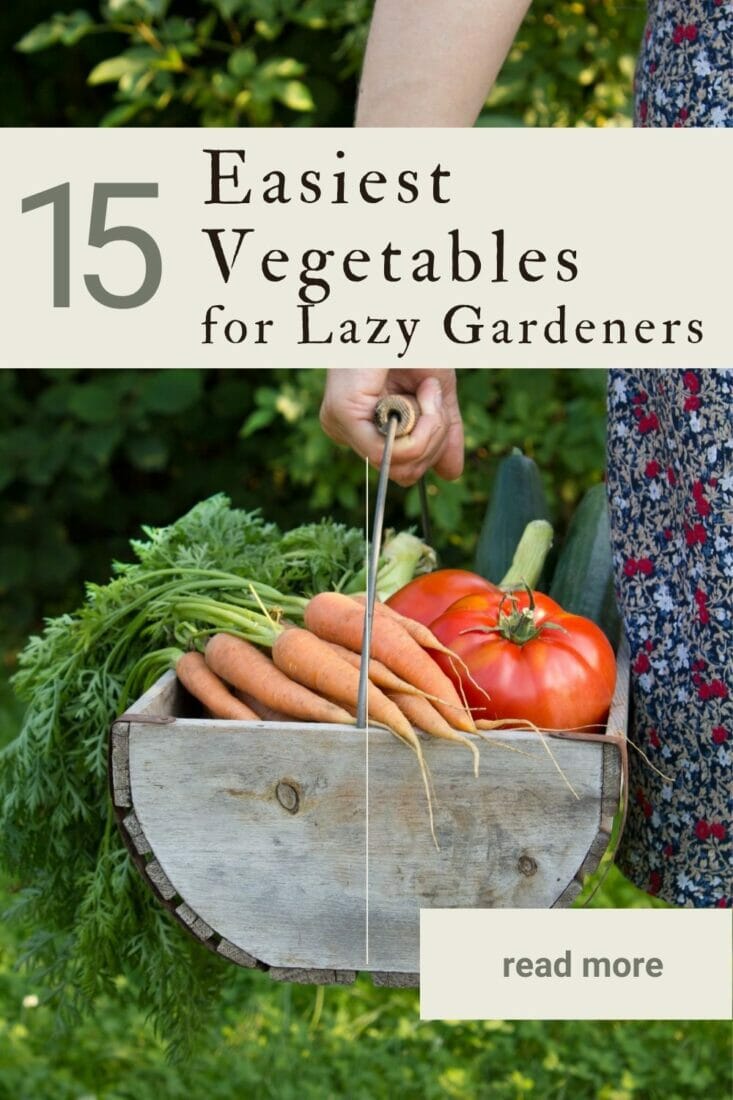The 15 Easiest Vegetables for Lazy Gardeners to Grow
Looking for the easiest vegetables to grow at home? Plant these vegetables and even the laziest gardeners will end up with heaps of produce!
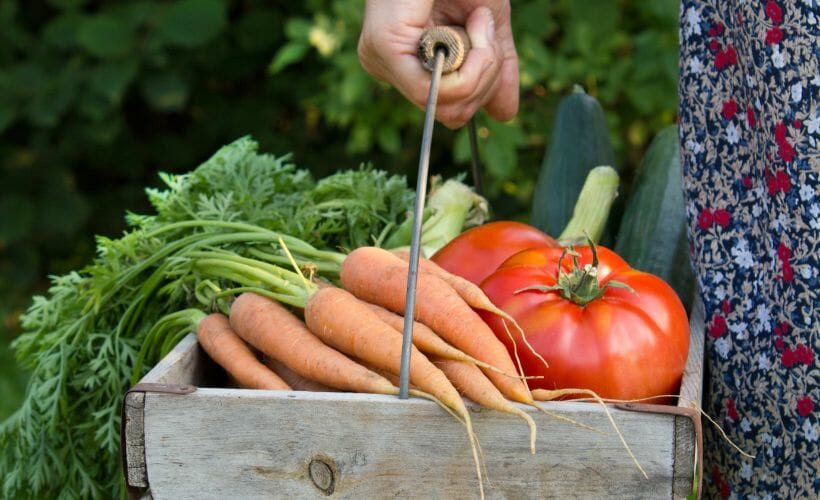
There’s nothing like vegetables fresh from the garden, but not all of us have the time or energy it takes to stay on top of garden upkeep. For those of us who want our couch potatoes and more real potatoes, there’s good news: There are tons of vegetables that are easy to plant, grow, and harvest.
Greens
Leafy greens like arugula, kale, lettuce, and spinach are great for beginner gardeners. I also really like loose-leaf lettuce like a mesclun mix. They mature in three to four weeks and harvesting is so simple; just snip the tops of the plant or pick leaves as needed. I would just take a pair of scissors and trim a little off as needed for quick and easy salads.
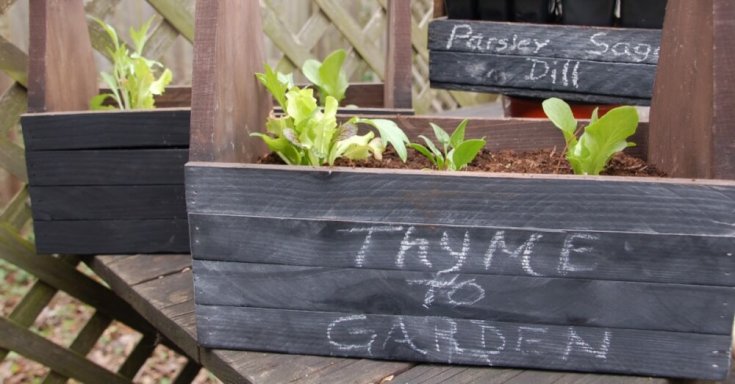
Chalkboard planters are perfect for planting greens indoors, on a deck/balcony, or along a walkway. Greens are also shade tolerant, so there are probably several areas around your homestead you can plant them.
Beets
These are cool-season crops. They can survive frost and near-freezing temperatures. Early crops can be planted in March or April. Formanova beets are excellent for canning. If pickled beets are your jam, you can easily water bath can them.
Chives
You can harvest chives 30 days after transplanting or 60 days after seeding. These plants produce beautiful flowers that will bloom in May or June. Chives prefer full sun. The best part about chives is they come back year after year. They are deer resistant and attract pollinators. I have chives growing in my strawberry and asparagus patch and they act as a living mulch.
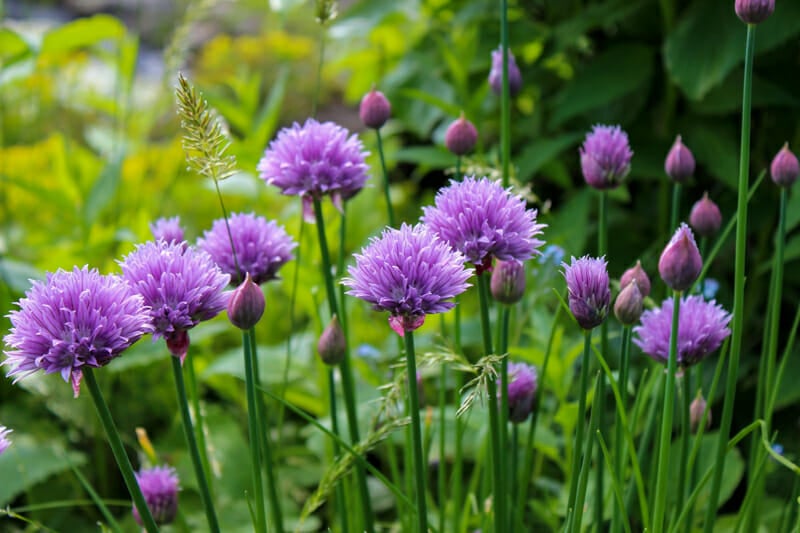
Herbs
Herbs like rosemary, thyme, mint, sage, oregano, parsley, and basil are all easy to grow. Planting basil next to tomatoes is said to improve the growth and flavor of your tomatoes and repel insects. These herbs grow well as a transplant or from seeds. Many herbs can tolerate partial shade, giving you more location options.
Check out these herbs that are perfect for the permaculture garden.
Garlic
Garlic can be planted in the spring, as soon as the ground is thawed enough, but it’s recommended that you plant in the fall and harvest the next summer. The best type of garlic for you to grow will depend on where you live.
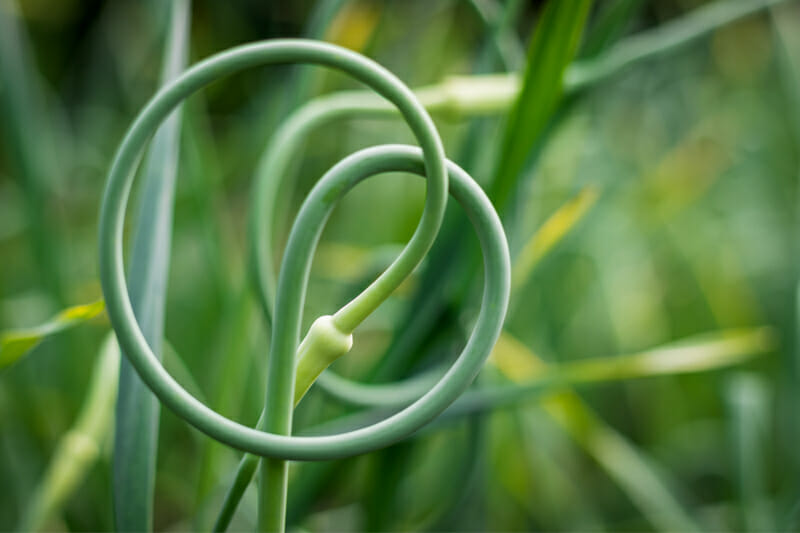
Potatoes
Pretty much the easiest annual edible. Plant these root vegetables in late February or early March. To harvest, use a spade to gently dig into the soil on the outside edges of the plant, carefully lift the plant and grab the potatoes that you want. Put the plant back in place and water it. Allow harvested potatoes to cure in cool temperatures – 45-60ºF – for several days to two weeks.
Onions
They require lots of sunlight and good drainage, but if you can dig a tiny hole in the ground, you can grow onions. You can grow them from seedlings, bulbs, or even discarded onion bottoms. You can harvest the bulb at the end of the season or you can enjoy the tops. I actually prefer green onions over the bulb.
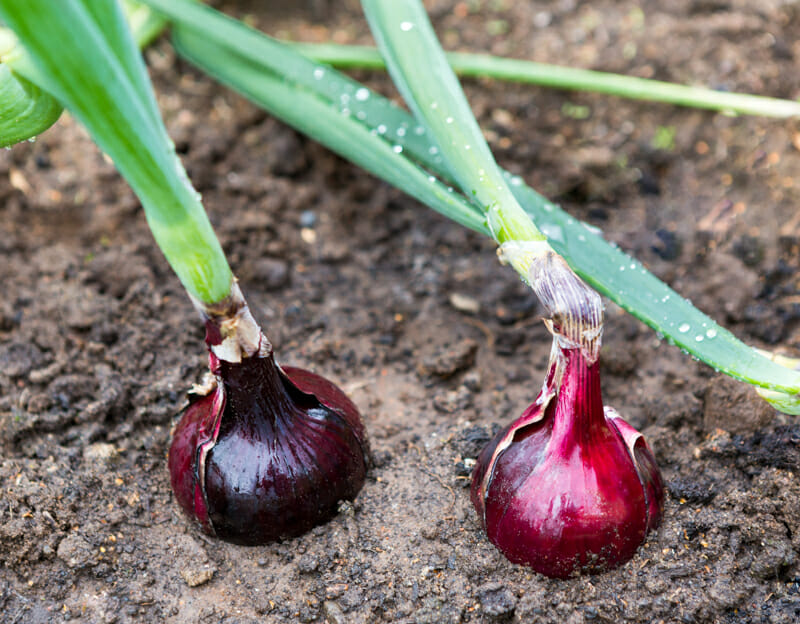
Green Beans
If the effort of building a trellis scares you, don’t worry: You can plant your pole beans against a fence and they’ll grow just fine. Bush beans don’t even require a trellis or fence and they are strong producers. String beans prefer sun and well-drained soil and grow quickly; just make sure to regularly harvest or it will stop producing new beans.
Carrots
You need to have loose, rich soil – free of stones – so the carrots can grow properly. Carrots are a cool-weather crop; in really warm areas, plant your carrots in fall or winter. They’ll take one to three weeks to sprout. Carrots get tastier as they grow, so harvest them as soon as they’re big enough to eat or leave them to mature. It’s up to you.
Here are some tips for getting carrots to germinate.
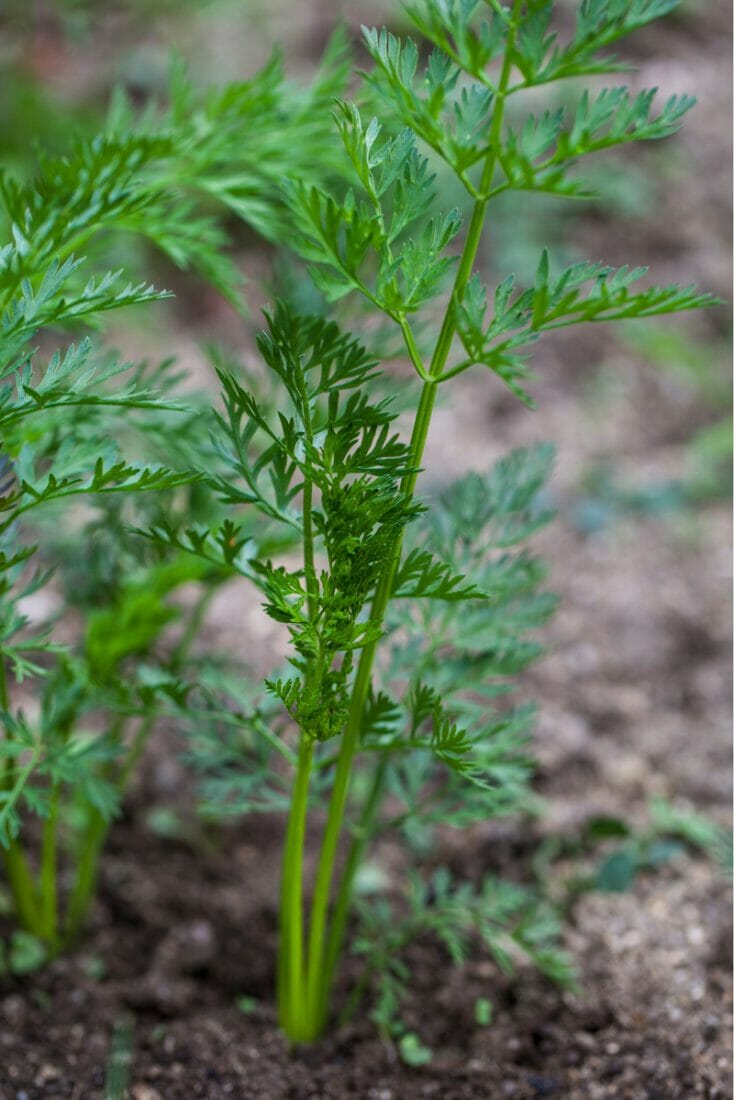
Tomatoes
Grape or cherry tomatoes are great if you want something of a small variety. Early Girl tomatoes and slicing tomatoes like Better Boys or Brandywine are a staple in my vegetable garden each year. If you want giant tomatoes that are highly disease resistant and still have phenomenal flavor, your best bet is a Celebrity tomato. Tomatoes will grow all summer long if they get enough sun and water. Early Girl plants grow tall, and will absolutely require the support of stakes or a tomato cage.
If you need some tomato tips, let me share with you my big three secrets.
Peppers
Bell peppers or hot peppers like jalapenos are both good options. If you plant a mix of peppers, be aware that they can and will cross-pollinate and you might find yourself with sweet peppers that have a little heat behind them. Not sure what to do with your peppers? Try this roasted red pepper quiche recipe.
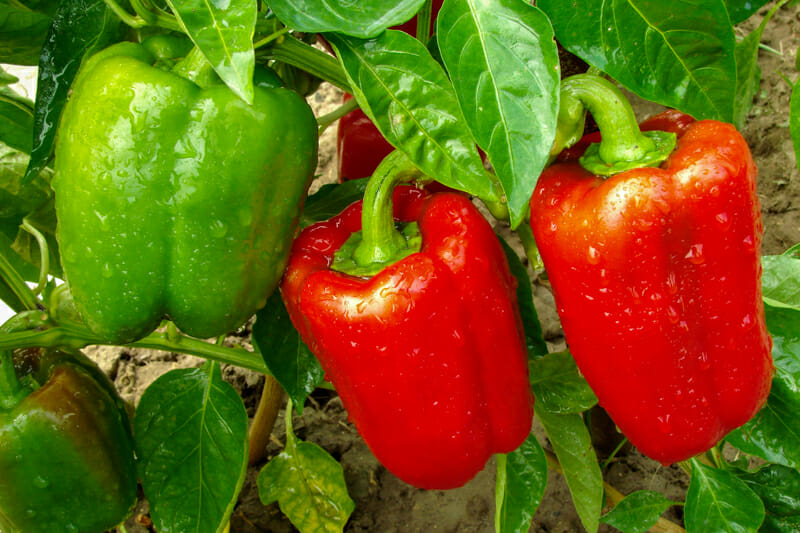
Peas
Snap peas or snow peas are great options. They are a fast-growing, cool-season vegetable; plant in early spring. Direct sow seeds and keep them moist until they germinate. That’s pretty much all it takes to have a plethora of peas.
Radishes
These are early spring or late summer crops. Radishes are sweetest when you harvest them young, and they mature fast – some as quickly as three weeks.
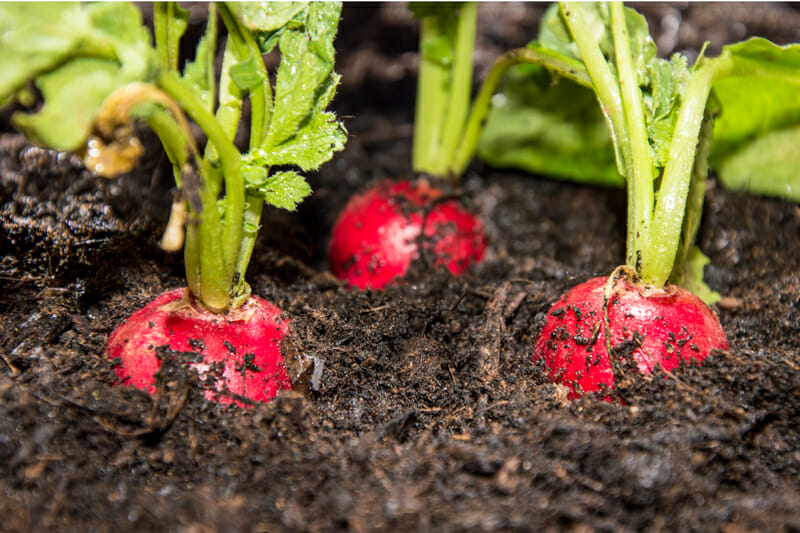
Zucchini
Harvest when they are small. This results in a more tender zucchini that has a better flavor. Make sure you leave plenty of space between plants; these can produce large amounts of squash. You can easily sneak zucchini into meals that will impress your kids.
Cucumbers
You can start harvesting cucumbers about 12 weeks after sowing. Ideally, you want to harvest early in the morning when it’s still cool out. Harvest your cucumbers while they are young because once they start to show signs of producing seeds, it’s likely that your cucumbers will be bitter.
Make some super crispy dill pickles with this secret trick.
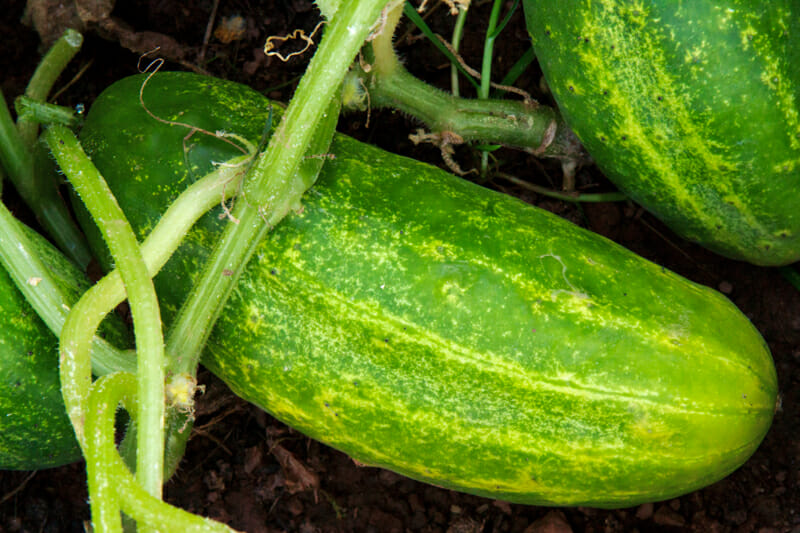
Whether your goal is to live more sustainably, reduce your grocery bill, or just spend more time in nature, there’s always a good reason to plant a garden. With so many options for an easy and hassle-free garden, there’s really no excuse to not grow your own food. So get outside, get your hands dirty and then sit back and enjoy the “veggies” of your labor.
